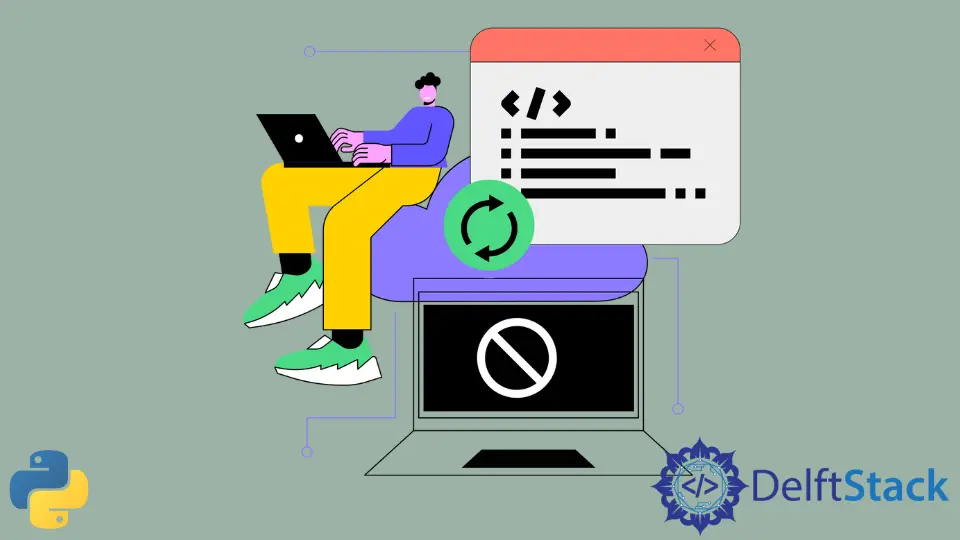在 Python 中停止 for 迴圈
Najwa Riyaz
2023年10月10日
Python
Python Loop

本文介紹了在 Python 中停止 for 迴圈的不同方法。
使用 break 語句停止 Python for 迴圈
在 Python 中使用 break 語句停止 for 迴圈。
例如,
max = 4
counter = 0
for a in range(max):
if counter == 3:
print("counter value=3. Stop the for loop")
break
else:
print("counter value<3. Continue the for loop. Counter value=", counter)
counter = counter + 1
continue
break
輸出:
counter value<3. Continue the for loop. Counter value= 0
counter value<3. Continue the for loop. Counter value= 1
counter value<3. Continue the for loop. Counter value= 2
counter value=3. Stop the for loop
在這裡,只要滿足 for 迴圈條件,就會列印以下列印語句。例如 -
counter value<3. Continue the for loop. Counter value= 0
然而,一旦 counter 值等於 3,它就會跳出 for 迴圈。因此,for 迴圈停止。
將程式碼包裝在一個函式中,然後使用 return 語句
將程式碼包裝在一個函式中,然後使用 return 語句。
例如,
def fncreturn():
return
max = 4
counter = 0
for a in range(max):
if counter == 3:
print("counter value=3. Stop the for loop")
fncreturn()
else:
print("counter value<3. Continue the for loop. Counter value=", counter)
counter = counter + 1
continue
break
輸出:
counter value<3. Continue the for loop. Counter value= 0
counter value<3. Continue the for loop. Counter value= 1
counter value<3. Continue the for loop. Counter value= 2
counter value=3. Stop the for loop
在這裡,當計數器值達到 3 時,將呼叫該函式。該函式只有一個 return 語句。釋出後,它有助於退出 for 迴圈。
引發異常以停止 Python for 迴圈
引發異常以停止 for 迴圈。
例如,
max = 4
counter = 0
try:
for a in range(max):
if counter == 3:
print("counter value=3. Stop the for loop")
raise StopIteration
else:
print("counter value<3. Continue the for loop. Counter value=", counter)
counter = counter + 1
except StopIteration:
pass
輸出:
counter value<3. Continue the for loop. Counter value= 0
counter value<3. Continue the for loop. Counter value= 1
counter value<3. Continue the for loop. Counter value= 2
counter value=3. Stop the for loop
在這裡,當計數器值達到 3 時,將引發異常。它立即退出 for 迴圈。
Enjoying our tutorials? Subscribe to DelftStack on YouTube to support us in creating more high-quality video guides. Subscribe